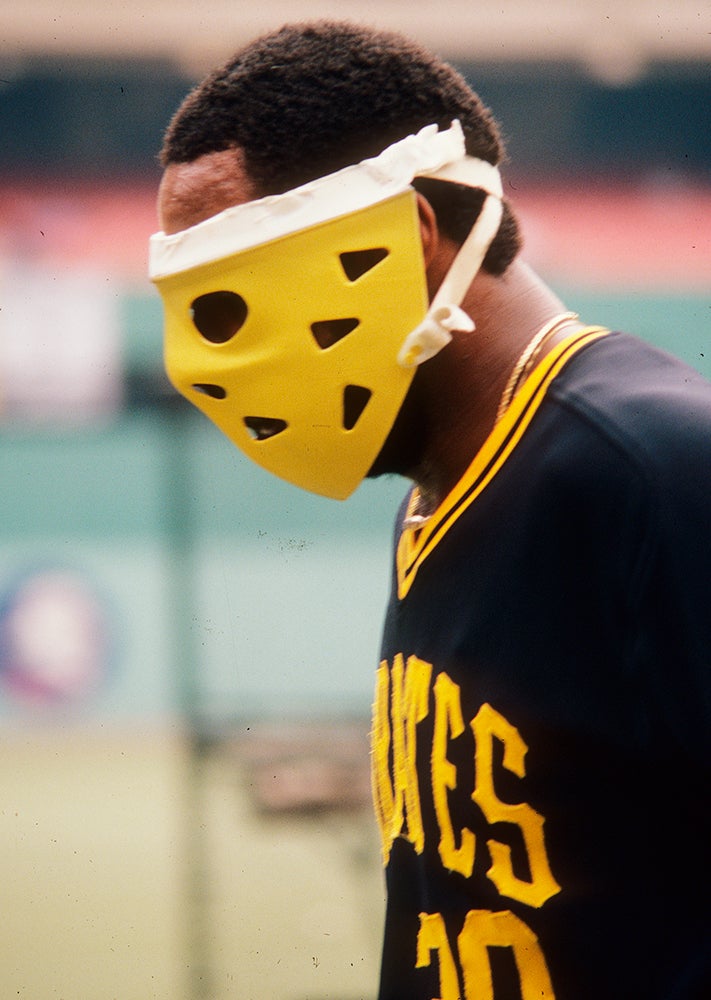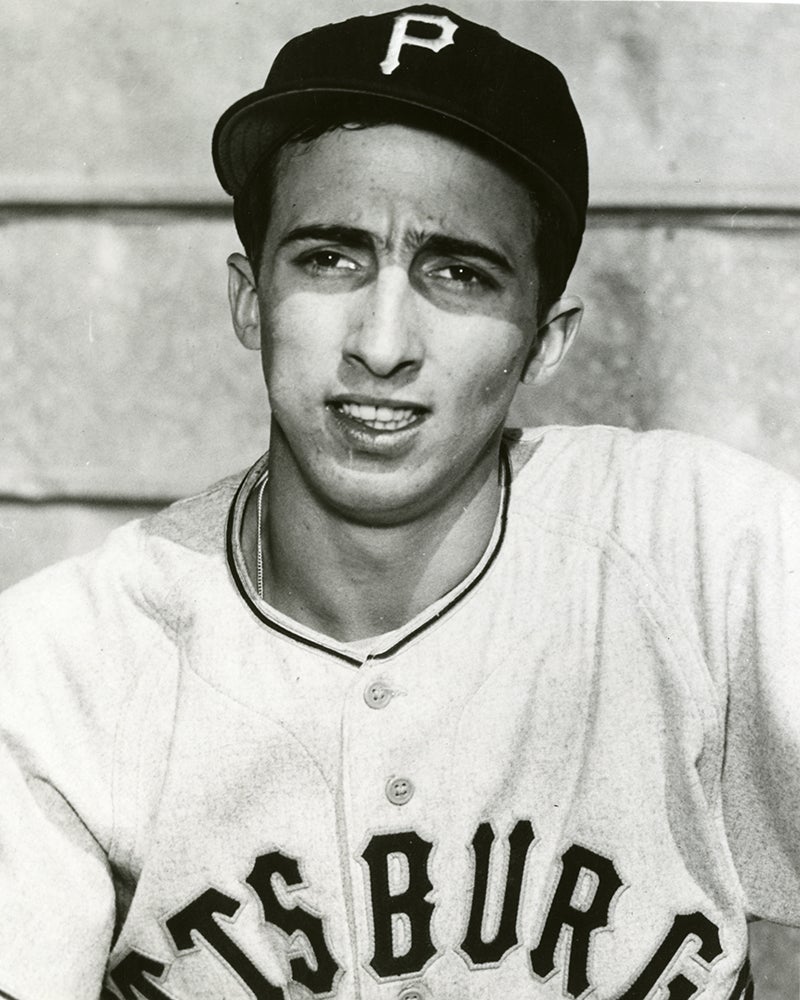- Home
- Our Stories
- Parker faced up to injury during MVP season
Parker faced up to injury during MVP season
If his 6-foot-5, 230-pound stature didn’t intimidate the competition enough, Dave Parker’s headgear was more than capable of instilling fear.
On July 16, 1978, Parker was called upon as a pinch-hitter in the 11th inning. As the prolific power hitter climbed out of the dugout, he didn’t wear only a traditional batting helmet. Instead, Parker added a half-black, half-yellow hockey goalie mask to his batting ensemble.

Two weeks prior, the Pirates slugger was involved in a home plate collision with Mets catcher John Stearns, a former college football player. After Parker was thrown out, his left eyebrow required three stitches, and his eye was nearly swollen shut. It was later revealed Parker had broken his cheekbone.
That season, Parker was at the peak of his career. He would eventually win the 1978 National League MVP Award with a .334 batting average with 30 home runs and 117 RBI. Though the injury benched the five-tool player, Parker refused to sit out long.
“He wanted to play again right away, so I knew I had to come up with something fast,” Tony Bartirome, who was the Pirates’ trainer at the time, told ESPN. “If he’d had his way, he would have missed only four games.”
Parker missed a little more than two weeks with the injury, but when he returned, his intimidating presence was elevated. The pinch-hit appearance left people in awe. Parker was ultimately intentionally walked, which further proved Parker’s intimidation status.
As the future Hall of Famer continued to heal, his helmet evolved.
In his initial attempts to return to the Pirates’ lineup, Parker and Bartirome developed a Plexiglas face mask, similar to the face shields used in the NBA. However, in batting practice, Parker said his pitch vision became disoriented, so he switched to the hockey mask.
“We were real creative with it,” Parker told ESPN. “We painted one side yellow, one side black. I’d put it on and then put my helmet on over it. The first time I wore it in batting practice, I was hitting balls in the second tier, third tier, so I used it in that first game. But I found it kind of prevented me from seeing some of the pitches, because of the way it was constructed, so we had to try something else.”

His next helmet model dipped into football protective designs instead. As the Pirates shared Three Rivers Stadium with the Steelers at the time, Parker and Bartirome approached Tony Parisi, the Steelers’ equipment manager.
“I told them we could put a football mask on there,” Parisi told ESPN. “But it was a little tricky, because of the way a baseball helmet is structured. If you drill the holes crooked, any impact would crack the helmet.”
Parisi embraced the challenge and developed a two-bar face guard, a style that was common in the NFL at the time. However, Parker didn’t approve.
“It was too high,” he told ESPN. “It was up in my eyes and affected my vision. I wanted something a little lower and wider.”
The second edition arrived with one bar across the face as two support bars connected to the bottom of the frame. Parker approved this style but didn’t use it for hitting. He only used it to run the bases.
Parker’s helmet not only allowed him to continue to play as his face healed; it also became the inspiration for youth baseball helmets decades later.
Parker’s creative headgear earned him confused looks, but Pirates manager Chuck Tanner didn’t mind.
“I didn’t care what he wore, as long as I could put him in the lineup,” he told ESPN.
Noah Douglas is the 2025 communications intern in the Frank and Peggy Steele Internship Program for Leadership Development

